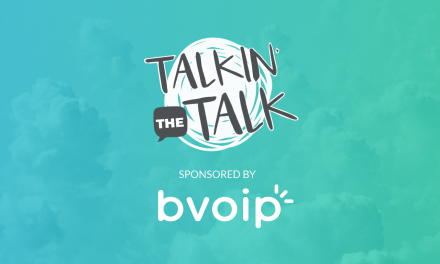As MSPs, we have always coined ourselves as trusted “small-business technology experts.” While this is largely still true, the scope upon which the word “technology” extends is growing larger everyday. This has left many MSPs confused as to what their service and support boundaries truly are and how their expertise fits into the needs of the new small-business. If your only base of expertise is in hardware, network infrastructure, and desktop support, you are leaving your company vulnerable to disruption. It’s time we all start focusing more on what’s next, and how you as a Managed Service Providers can adapt and expand into less comfortable areas.
Since the process of expanding your expertise begins with education, here are a few topics that I think are worth reading up on this summer:
Virtual Workplaces
Over the last few years, there has been a trending concept in business that I haven’t been able to figure out until just recently. The phrase often used to describe this concept is “work-life balance.” While I used to think this was more about taking days off, working less, and leading more meaningful personal lives, the pandemic has taught me to have a different understanding of it. In my opinion, work-life balance is really more like work-life enablement. There are some forward-thinking employers out there that are providing the resources necessary for their employees to better manage their life, both personally and professionally, and thus offering a better “work-life balance” as a result. It’s not about vacation days, 401k packages, and employee unions. It’s about technology enabled freedoms that empower employees to simply “be themselves”, whatever and wherever that may be.
When you start to think about it this way, you begin to realize what impact an MSP has on the work-life balance that your clients can offer to its employees. Last week we talked about Microsoft’s Windows 365 and leveraging it within a hybrid bring-your-own-device environment. The freedom for an employee to access their virtual work PC from any device they want to use is yet another example of a freedom that contributes to a positive work-life balance. Now think about the evolution beyond hybrid work, knowing that over time the employee will have more control over how and when they work. Is this a mixed reality type environment like the one under-development with Microsoft Mesh? Or maybe something different entirely? No matter what this looks like, you as an MSP need to find your role in the evolution of the virtual workplace. Primarily because this evolution is well under-way.
The Ultimate Guide To Cash Flow For Managed Services
Sponsored by Alternative Payments & Zest
Zero-Trust Security
Cybersecurity is as hot of an industry as you will find right now. Outside investments are pouring in as new tools, software, and services are being developed to help combat tomorrow’s problems. The common theme that seems to connect all of these emerging technologies is “zero-trust.” The way workplaces are trending, we can no longer rely on a network edge to keep our systems and endpoints safe. In most hybrid or remote work environments, there is no edge, and thus we need to rethink the way we secure these roaming endpoints as if this change is permanent.
I recently saw a stat that claimed that “54% of IT professionals think that remote workers are a greater security risk.” While this might be true, all risks can be managed. Remote workers are only a risk if you try to secure them the same way you would a traditional office worker. If you were to rethink that security based on the reality that hybrid work is now permanent (using zero-trust), you could substantially lower this risk to the point where the opposite could become true. As MSPs, it is up to you to remove the band-aids that were applied during the pandemic and rethink your solutions based on what the workplace actually looks like. Those simply waiting until things go “back-to-normal” are going to be left behind.
HR, Marketing & Fin-tech
To really embrace technology as a small business you need to do so, not just in general operations, but also across every department. The most common area that businesses are leveraging technology is in their marketing. Even small businesses of just a few employees likely use several complex systems to host their website, create content, collect payments, track analytics, store data, and automate outreach. Beyond these fundamental-yet-complex elements, you also have emerging tech that may enable better segmentation, behavior tracking, data enrichment, and optimization. To be effective, this marketing “tech stack” needs to be stitched together in a way that allows information to flow freely and it also needs to intersect with each of the other departments of the business as well.
While marketing may be the most common, this isn’t the only area of business that this tranformation is happening to. Both HR and Finance are both seeing their fair share of new SaaS solutions that are improving the way these departments work. As MSPs, you need to figure out what your role is in managing and supporting all of these vendors and more importantly, how this will impact your business. SaaS support has long been a grey area for MSPs (as they typically pick and choose what they want to support based on preference), but if you are claiming to offer “vCIO” services, then these responsibilities are very much within scope. At minimum, modern MSPs should clearly define their stance on department specific SaaS offerings and make it clear to the customer how this overlaps with the services offered.
The Ultimate Guide To Cash Flow For Managed Services
Sponsored by Alternative Payments & Zest
Low-Code Automation
Due to the inter-departmental SaaS-frenzy mentioned above, this has created a significant amount of demand in the area of automation. Anyone that has attempted traditional automation knows that it leaves a lot to be desired. Hiring a reliable developer that knows the stack can be expensive, even on freelance sites like Upwork. Much likely any technology, a custom-developed API connection is bound to break, requiring you to constantly go back to the developer (if you can find them) to maintain the connection. This has always led to frustration which causes stakeholders to think hard before approving automation projects in any area of the business.
Enter low-code automation platforms such as Zapier and IFTTT. With over 3,000 apps supported, these platforms allow businesses to create API connections between systems in just a few clicks with no code. Now that the developer is out of the picture, we need to think about who is responsible for implementing and maintaining these connections? If not the MSP, who? If these connections only existed within one area of the business (such as marketing) then the answer is obvious, but this is not often the case. Much like my recommendation to define your stance on SaaS, its also important to address automation between these systems as well. If I were out there pushing “digital transformation” as one of my leading buzzwords, then you would think that this is an area that I would have to be knowledgeable in as well.
Content Delivery Networks (CDNs)
Last week we saw one of the largest internet infrastructure outages in quite some time. For what seemed like an eternity, many of the world’s top banks, e-commerce sites, gaming platforms, and more were down. The source? Akamai, a content delivery network that most average consumers have never heard of until now. These consumers responded to this outage the way that they respond to most. MSPs everywhere saw an increase in tickets on their services desk as confused users couldn’t figure out why some sites worked and some didn’t.
Whenever an event happens like this we are reminded how fragile our internet ecosystem really is. With many of the top providers of these services controlling the lion share of their markets, it creates points of failure that wreak havoc on our productivity. Traffic that is served content through a CDN has increased every year since this technologies inception and will continue to as we continue to optimize and secure content on the internet. What started as a way to serve this content faster and more efficiently is now a major part of the IT security industry. As MSPs, we need to realize that CDN technology is becoming more accessible through platforms such as Cloudflare and Akamai and it will move down-market as a result. This is now becoming a small business security necessity that should not be overlooked for any MSP that claims to offer “Managed Security” services.

SPONSORED BY ZEST

















